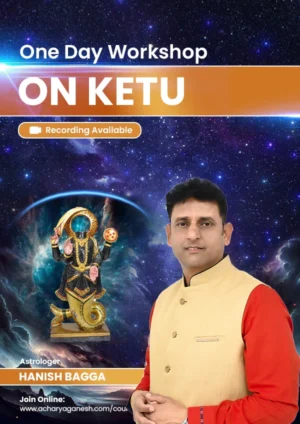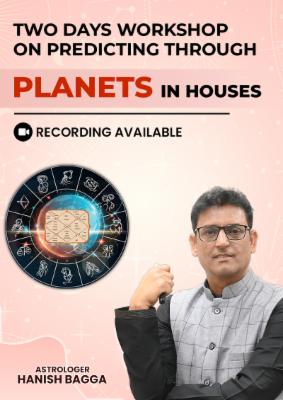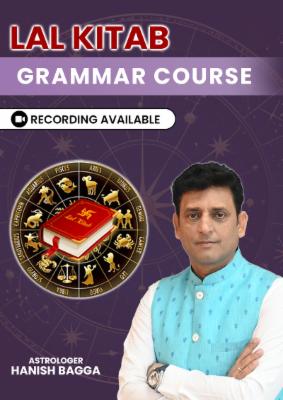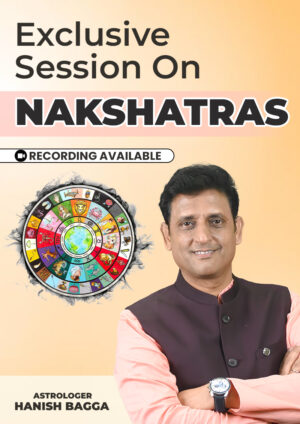- Introduction to Shankar Mahadevan Stotram:
- The Origins of Shiv Tandav Stotram
- Shankar Mahadevan: The Voice Behind the Modern Rendition
- The Making of Shankar Mahadevan's Shiv Tandav Stotram
- The Reception and Popularity
- Learning and Performing the Shiv Tandav Stotram
- The Spiritual Dimension
- Conclusion
Introduction to Shankar Mahadevan Stotram:
In the vast ocean of Indian classical music, there are certain performances that stand out, captivating listeners and leaving an indelible mark on their hearts. One such remarkable rendition is Shankar Mahadevan’s version of the Shiv Tandav Stotram. This powerful hymn, dedicated to Lord Shiva, has been given new life through Mahadevan’s exceptional vocal prowess and musical interpretation.
In this blog post, we’ll dive deep into the world of Shankar Mahadevan’s Shiv Tandav Stotram, exploring its origins, significance, and the impact it has had on both devotees and music enthusiasts alike. Whether you’re a long-time fan of Indian classical music or new to this genre, join us on this fascinating journey through spirituality and melody.
The Origins of Shiv Tandav Stotram
A Glimpse into Ancient Sanskrit Literature
The Shiv Tandav Stotram is a Sanskrit hymn that has been revered for centuries. It is believed to have been composed by Ravana, the demon king of Lanka, as described in Hindu mythology. According to legend, Ravana, who was a great devotee of Lord Shiva despite his villainous reputation, created this hymn to praise the cosmic dance of destruction performed by Lord Shiva.
The Meaning Behind the Verses
The Shiv Tandav Stotram is not just a simple praise song; it’s a complex piece of poetry that describes the various aspects of Lord Shiva’s cosmic dance. Each verse paints a vivid picture of Shiva’s form, his actions, and the profound symbolism behind his dance. The stotram speaks of the Lord’s third eye, his blue throat, the crescent moon adorning his head, and the rhythmic beating of his damaru (drum).
“Jataa taveega galajjala pravaaha paavitasthale
Gale avalambya lambitaam bhujangatungamaalikaam”
This opening verse describes Shiva’s matted locks, from which the holy river Ganga flows, and the serpent that adorns his neck like a garland.
Shankar Mahadevan: The Voice Behind the Modern Rendition
A Brief Introduction to Shankar Mahadevan
Shankar Mahadevan is a name that needs no introduction in the Indian music industry. Born on March 3, 1967, in Chembur, Mumbai, Mahadevan has established himself as one of the most versatile and talented singers and composers in India. His journey in music began at a young age, and he has since mastered various forms of music, including Carnatic, Hindustani, and Western classical.
Mahadevan’s Musical Style and Expertise
What sets Shankar Mahadevan apart is his ability to blend different musical styles seamlessly. His vocal range is extraordinary, allowing him to effortlessly switch between classical ragas and contemporary pop melodies. This versatility is evident in his rendition of the Shiv Tandav Stotram, where he combines traditional Sanskrit verses with modern musical arrangements.
The Making of Shankar Mahadevan’s Shiv Tandav Stotram
The Inspiration Behind the Rendition
While the exact inspiration for Mahadevan’s version of the Shiv Tandav Stotram is not widely documented, it’s clear that the project was born out of a deep respect for the original composition and a desire to make it accessible to a wider audience. Mahadevan’s rendition brings together the ancient Sanskrit verses with contemporary musical elements, creating a unique fusion that appeals to both traditionalists and modern music lovers.
The Musical Arrangement
Mahadevan’s version of the Shiv Tandav Stotram is a masterclass in musical arrangement. The composition begins with a soft, almost meditative introduction, gradually building up to a crescendo that mirrors the intensity of Lord Shiva’s cosmic dance. Throughout the piece, traditional Indian instruments like the tabla and santoor are seamlessly blended with modern orchestral elements, creating a rich, layered sound that complements Mahadevan’s powerful vocals.
The Impact of Mahadevan’s Shiv Tandav Stotram
Bridging the Gap Between Classical and Contemporary
One of the most significant impacts of Shankar Mahadevan’s rendition of the Shiv Tandav Stotram is how it has bridged the gap between classical Sanskrit hymns and contemporary music. By presenting this ancient stotram in a modern musical setting, Mahadevan has made it accessible to a younger generation of listeners who might otherwise have found traditional renditions difficult to appreciate.
Spiritual and Emotional Resonance
Many listeners have reported feeling a deep spiritual and emotional connection when listening to Mahadevan’s Shiv Tandav Stotram. The power of the Sanskrit verses, combined with Mahadevan’s emotive delivery and the stirring musical arrangement, creates an immersive experience that transcends mere entertainment. For many, it serves as a form of musical meditation, allowing them to connect with the divine through sound and rhythm.
Cultural Significance
The popularity of Mahadevan’s rendition has also contributed to a renewed interest in Sanskrit literature and traditional Hindu hymns. It has sparked conversations about the relevance of ancient texts in modern times and how they can be reinterpreted for contemporary audiences without losing their essence.
Analyzing the Musical Elements
Vocal Techniques
Shankar Mahadevan’s vocal performance in the Shiv Tandav Stotram showcases his mastery of various singing techniques. His rendition includes:
- Alaap: The slow, improvised introduction that sets the mood for the composition
- Taans: Rapid melodic patterns that demonstrate vocal agility
- Gamaks: Oscillations between notes that add depth and emotion to the performance
Instrumentation
The musical arrangement of Mahadevan’s Shiv Tandav Stotram is a perfect blend of traditional and modern instruments. Some key instruments used include:
- Tabla: Providing the rhythmic foundation
- Santoor: Adding a shimmering, ethereal quality to the melody
- Strings: Creating a rich, orchestral backdrop
- Synthesizers: Adding modern textures and atmospherics
Rhythm and Time Signatures
The composition employs various time signatures and rhythmic patterns, reflecting the dynamic nature of Lord Shiva’s dance. The tempo changes throughout the piece, starting slow and meditative, building to a frenetic pace, and then returning to a calm resolution.
The Reception and Popularity
Critical Acclaim
Shankar Mahadevan’s rendition of the Shiv Tandav Stotram has received widespread critical acclaim. Music critics have praised the innovative approach to the traditional hymn, highlighting Mahadevan’s vocal prowess and the sophisticated musical arrangement. Many have noted how the rendition manages to maintain the sanctity of the original verses while presenting them in a fresh, contemporary light.
Popular Appeal
The popularity of this rendition extends far beyond classical music circles. It has found a place in various settings, from yoga and meditation sessions to background music in films and television shows. The track has amassed millions of views on various streaming platforms, testament to its broad appeal.
Use in Popular Media
Mahadevan’s Shiv Tandav Stotram has been featured in several Bollywood films and television shows, further increasing its reach and popularity. Its powerful, emotive quality makes it a popular choice for scenes depicting intense emotions or spiritual awakening.
Learning and Performing the Shiv Tandav Stotram
Understanding the Lyrics
For those inspired to learn and perform the Shiv Tandav Stotram, the first step is understanding the lyrics. While the Sanskrit verses can be challenging for beginners, there are numerous resources available online that provide translations and explanations of each verse. Understanding the meaning behind the words adds depth to the performance and helps in conveying the emotion of the hymn.
Vocal Training Tips
To perform the Shiv Tandav Stotram in the style of Shankar Mahadevan, one needs to develop certain vocal skills:
- Breath control: Essential for sustaining long phrases and executing complex melodic patterns
- Pronunciation: Correct pronunciation of Sanskrit words is crucial for maintaining the integrity of the hymn
- Pitch accuracy: The ability to hit and maintain the correct notes, especially during rapid melodic runs
Practice Techniques
Here are some practice techniques for aspiring performers:
- Start with slow, deliberate practice of each verse
- Use a tanpura or shruti box to maintain pitch accuracy
- Record your practice sessions and listen back to identify areas for improvement
- Practice with and without instrumental accompaniment to develop a strong sense of rhythm and melody
The Spiritual Dimension
Connecting with the Divine Through Music
For many, Shankar Mahadevan’s Shiv Tandav Stotram serves as a powerful tool for spiritual connection. The combination of sacred verses, emotive delivery, and stirring music creates an atmosphere conducive to meditation and introspection. Many listeners report feeling a sense of peace, awe, and connection to something greater than themselves when immersed in this rendition.
The Transformative Power of Sacred Music
There’s a growing body of research suggesting that listening to sacred music can have positive effects on mental and emotional well-being. The rhythmic chanting of mantras, in particular, has been associated with reduced stress levels and increased feelings of calm and centeredness. Mahadevan’s Shiv Tandav Stotram, with its repetitive verses and hypnotic rhythm, can potentially offer similar benefits to listeners.
Conclusion
Shankar Mahadevan’s rendition of the Shiv Tandav Stotram stands as a testament to the enduring power of ancient hymns and their ability to resonate with modern audiences when presented in an innovative, respectful manner. Through his extraordinary vocal skills and musical vision, Mahadevan has created a version of this sacred hymn that not only honors its roots but also makes it accessible to a wide range of listeners.
This rendition serves multiple purposes – it’s a piece of art that showcases musical excellence, a tool for spiritual connection, and a bridge between ancient traditions and contemporary tastes. Whether you’re a devotee seeking a deeper connection with the divine, a music enthusiast appreciating the technical brilliance, or simply someone looking for a powerful, emotive listening experience, Shankar Mahadevan’s Shiv Tandav Stotram offers something truly special.
As we conclude this exploration, it’s clear that this rendition is more than just a song – it’s a cultural phenomenon that has touched millions of lives, rekindled interest in classical literature, and demonstrated the unifying power of music. It stands as a shining example of how traditional art forms can be reimagined for modern times without losing their essence, and how music can serve as a powerful medium for spiritual expression and cultural preservation.
For interesting astrology-related videos, subscribe to us on Youtube
FAQs About Shankar Mahadevan Stotram
To address some common queries about Shankar Mahadevan’s Shiv Tandav Stotram, here’s a list of frequently asked questions:
Q1: When was Shankar Mahadevan’s version of Shiv Tandav Stotram released?
While the exact release date may vary depending on the platform, Mahadevan’s rendition of the Shiv Tandav Stotram gained popularity in the early 2000s.
Q2: Is Shankar Mahadevan’s version available on music streaming platforms?
Yes, the rendition is available on most major music streaming platforms, including Spotify, Apple Music, and YouTube Music.
Q3: How long is Shankar Mahadevan’s Shiv Tandav Stotram?
The duration of the track can vary slightly depending on the version, but it typically runs for about 8 to 10 minutes.
Know more about astrology: acharyaganesh.com
Q4: Does Shankar Mahadevan perform the Shiv Tandav Stotram live in concerts?
Yes, Mahadevan has performed this piece live at various concerts and events. It’s often a highlight of his live performances due to its powerful energy and audience appeal.






























